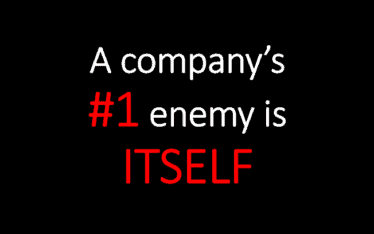An intimate understanding of the human side
Successful transformation requires an intimate understanding of the human side – the companies culture, values, people and behaviors must be changed to deliver the desired results.
As change management programs progress through strategy, target setting, design and implementation they effect different levels of the organisation. Change efforts must include plans for identifying leaders and pushing responsibility for design and implementation down trough the organisation. Implementation relies on line mangers and individual contributors.

Expecting resistance to change
Expecting resistance to change and planning for it from the start of your change management progamme will allow you to effectively manage objections. Understanding the most common reasons people object to change gives you the opportunity to plan your change strategy to address these factors.
Leaders of large change programs must over perform during the transformation and be the zealots who create a critical mass among the employees in favor of change. This requires more than mere buy-in or passive agreement that the direction of change is acceptable. It demands ownership by leaders willing to accept responsibility for making change happen in all of the areas they influence or control.
Transformation doesn’t happen overnight
Transformation doesn’t happen overnight. Historical success stories like Apple and IBM had their dark days – other case examples like Xerox and Barnes and Nobles did (and do) too.
Leaders need to stand fast in the face of these challenges, going beyond consistently exhorting the organization to work harder. Leaders need to push for, and celebrate small wins that reaffirm progress.
There’s no harder job for a corporate leader than transformation so make sure that you avoid the most common change management mistakes.
Short URL & title:
Real change management happens at the bottom — https://www.torbenrick.eu/t/r/acf
Share it:
If you enjoyed this article, please take 5 seconds to share it on your social network. Thanks!








Hello Torben,
Thanks for the excellent suggestions for implementing transformation. Before undertaking a transformation process it is useful to conduct a holistic organizational effectiveness survey to understand the current situation and learn about current strengths and weaknesses. This provides information and insight for knowing what needs to be changed. Employee, IT customer, external customer satisfaction and risk surveys are also excellent ways to identify opportunities for needed change
Hi Torben
Thanks for putting those thoughts together.
You are absolutely right that for a change programme to be sustained, the culture has to be right to accept and support the change. Making a culture change as well as an operational change can take some time to become “the way we do business here” or Business as Usual (BAU) and without this, the operational change may not actually last.
Too often completion of a particular operational change is seen as the end-game when in reality what is really needed is to achieve a culture change so that a degree of change in the business is seen as normal, rather than an exception. Over time the tolerable degree of change can be ramped up as staff become more involved and actively look to improve the business operations.
This provides the platform to enable both evolution, from front-line staff if they have the local autonomy to make change, and also revolution that requires buy-in across the whole organisation and so is usually driven from senior management.
You also correctly highlight the need to celebrate small wins. Another angle on this is that the change programme should look for quick-wins, ones that are relatively easy to do and of relatively high benefit, that will confirm the validity and benefits coming from the proposed changes. Adopting an agile approach and creating time-boxed change packages allows improvements and associated benefits to be visible quickly, thus helping to build momentum for the harder and larger changes yet to come.